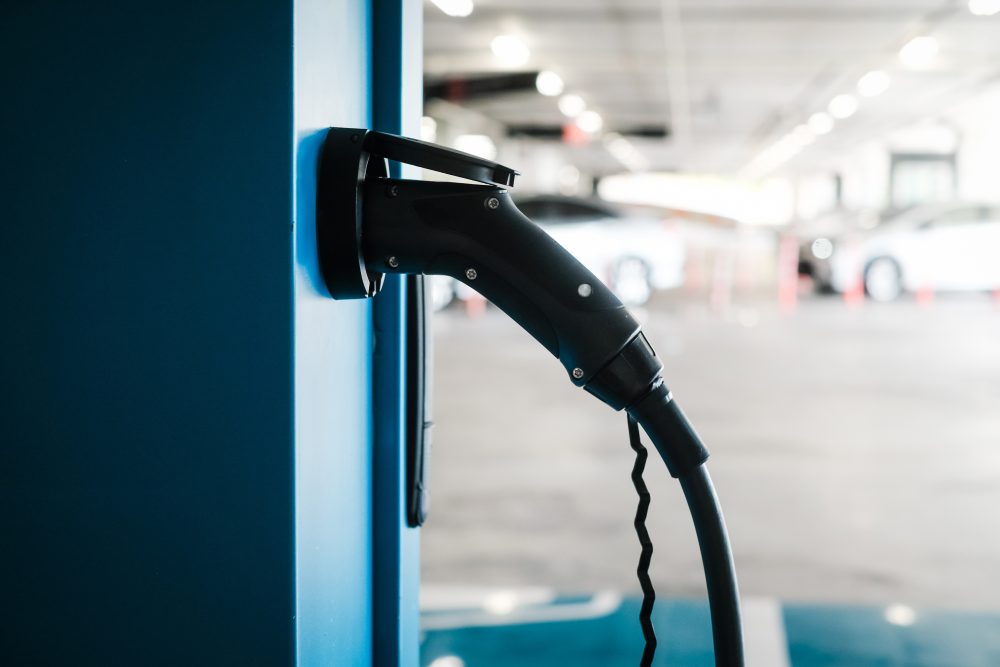Founder and CEO of Emporia Energy Shawn McLaughlin is on a mission to revolutionize home energy. After starting Emporia Energy five years ago, Shawn is not only reducing his customers’ carbon footprint, but also their utility bills. Emporia is pushing to change the user experience to improve accessibility for the public and allow consumers to get the most out of their products. Shawn sat down with Connected Design to discuss his contributions to the energy sphere and what he believes is next for energy management.
Connected Design
Can you give us an overview on the Emporia Smart Home Energy Management System?
Shawn
The Emporia Smart Home Energy Management System begins with an energy monitor that we install inside your electrical panel. It gives real-time energy data; it samples data 3000 times a second, sends it through your Home Area Network, up to the cloud, and finally, back to you either through a web or mobile app.
We use current transformers that come into the panel to get the whole home or building. Then, we use smaller current transformers, 50 amps, around the individual circuits. We can show you on a second-by-second basis exactly how much you are spending on your air conditioner, washer, dryer, and maybe on that hot tub, Jacuzzi, or water feature out front. What’s most exciting is that we show you where you’re using energy, and where you don’t even know you’re using energy.
So many of our customers write testimonials on our website or their Amazon reviews, and they’re just thrilled to death because they were able to lower their utility bills by 10-15 percent. They had a phantom load: a load in their house that they were unaware of and wasn’t necessary. I was one of those guys. I installed my first Emporia and noticed a huge drop in my laundry room. We bought the house and didn’t realize that it had in-floor heating. So in the middle of August, I was heating the floors and air conditioning the room. We were able to save 50 dollars a month, believe it or not. It was running nearly 24/7 throughout the summer months. Finding phantom loads is one of the big thrills that a lot of our customers first get when they plug in our system.
Connected Design
Can the Emporia energy management system be retrofitted into current infrastructures as well as new constructions?
Shawn
Probably 99 percent of our customer base is a retrofit into a current home. You can install this inside of your electrical panel. For skilled electricians, once they are in the panel, it will take them ten minutes to install. So, we just clamp on current transformers and power the device off a breaker. We can piggyback a 15 or 20-amp breaker, so it doesn’t consume a whole lot, but through that powering, we grab voltage and current transformers grab current. We multiply the amperage times the voltage, and that equals your power. So, it’s fairly simple technology.
Connected Design
Where would you say the greatest emphasis and drive is coming from?
Shawn
We have about 150,000 customers on our platform. Most of those customers begin with the energy management system and our electric vehicle chargers. We like to kid that its 150,000 retired electrical engineers. To get full value out of what we’re doing, you must understand how your utility rate schedule works and how the smart home devices work in your home.
We’re selling probably 90 percent of our product directly to consumers, and we only spent 5 percent of our revenue on marketing and advertising. We advertise just enough that people can find us, but we’re not trying to convince people to buy our product at this point.
Connected Design
Talk a little bit about how you combine your solutions with other solutions that are marketed as “connected design” or “smart design.” Does it ultimately become part of a holistic concept?
Shawn
We love to say that we have a holistic solution. When we think about electrification, we ask where are you getting started? You can call your utility or a local solar installer and can start buying smart home devices, but before you know it, you have six different apps trying to control energy usage in your house. At Emporia, we are trying to bring three things together.
One is hardware. We have designed and built hardware where we felt it was necessary because there wasn’t a solution on the market that we felt fit our customers’ needs. So, we brought the energy management system to market, from a level two EV charger to a home battery system. Now we’re working on a bidirectional EV charger. But that’s not all. We can control our hardware, as well as third-party smart home devices.
We have done cloud-to-cloud API integrations with third-party thermostats so that we control the HVAC systems. We can also adjust car charging through the car telemetry, even if you don’t have a smart charger.
Bringing it all together, that holistic approach consists of hardware, software, and distributed energy monetization opportunities on a single platform.

Connected Design
Do you see artificial intelligence technologies assisting these systems?
Shawn
I have a hard time using the word artificial intelligence. We want to change the user experience to cater to the public so that you’ll be able to install our device. Then the device will get to learn what’s going on in your home and can upload your utility rate schedule. We’ve written to the General Department of Energy and Rules Utility Database, so it will pull up your rate schedule, see the smart home device, and send you a notification to say: “Hey, you have a smart thermostat. If we use that to prepare your house during off-peak hours before the peak, we could save you $12 a month. Would you like us to do that?”
We’ll make the recommendation and suggestion, then configure it. If we notice that you have a demand charge, we will say: “Hey, would you like us to pause your EV when your oven and air conditioner kick on? We think that will save you $15 a month.” We want to get that user experience, so people don’t have to think about it. We’ll do that work for them, and they just must approve of the different things that we’ve been doing in their home.
Connected Design
Can you speak to any of the challenges that you’re presently facing when it comes to growing this technology?
Shawn
I think it’s primarily awareness. The smart home enthusiast is our number one market. Number two are the people that try to reduce their energy bill; however, we think in the future that will flip flop. The public that wants to drive savings and their energy bill will be the people who are buying our product.
It starts with us changing that user experience. The average consumer can get full use out of the product while we’re sending you multiple reports. We have Emporia set up in my house, and my wife and I never even noticed that Emporia systems do anything, but it’s doing hundreds of things every month. They are small things like adjusting the thermostat, oven, and air conditioner. It pauses the EV charger when those cycle back off, and it turns it back on.
We don’t notice those things; the car is still full when we go out in the morning to drive it. Through reports, we can show you the hundreds of things we’ve done and exactly how much you have saved. That’s going to be 10-20 percent off of your utility bill. Our top-of-the-line, energy management system is $165. For most people, that’s going to pay out in well under a year.

Connected Design
It is very much direct to customers now, but are there opportunities up the channel?
Shawn
Most of it is direct to consumers today. We are slowly transitioning to more B2B. We think having business partners that are selling these to consumers is going to continue to play out over the next few years, especially by 2026 and 2027. There are a few different customers such as solar installers who are our number one business customer, and they’re using our system along with their solar systems.
Connected Design:
It is extending your grid to the garage, correct?
Shawn
Yeah, a car is going to be the biggest appliance in your house. It just happens to be plugged in sometimes, and not plugged in other times. That is why we believe our flagship product is going to be our Bi-directional EV Charger. We’ve spent about a year and a half now in development and believe we’ll have the product on the market next year. This concept will run your home or building off your car battery. So, when energy prices are expensive, we’ll pull from the car battery, then when energy prices are cheap, like in the middle of the night, we will fill your car battery. It is just managing the different prices between peak hours and off hours, which may save 50 percent off your utility bill.
Connected Design
Can you talk about your vision for the next three to five years and give us your best-case scenario?
Shawn
I think we have set forward some aggressive goals by the end of this decade as far as carbon reduction in this country. It is going to take all of us to achieve that.
The electrification of vehicles is fantastic, but we need to think about our homes and how they use energy. During the middle of sunlight, there’s lots of solar and renewables, therefore it will impact the grid less than if you’re using it at seven or eight at night during peak energy usage hours. A real game changer will be bi-directionally EV charging to support the number of renewables that we need to meet the decarbonization goals we put forth.
A stationary battery is about $1,000 a kilowatt-hour. Tapping into your car battery will cost you about $50 a kilowatt hour. $1000 to $50 is a game changer for distributed renewable generation. Additionally, storing it in your car and using it when you want is less expensive than centralized hydrocarbon and transmission. Fast forward five years, people are going to have a choice, they’re going to be able to produce, use, and manage their energy. It will be 30-40 percent cheaper and completely sustainable.
The average homeowner will not even think twice about having an energy management system. Past that, I love the idea of using this microgrid to power developing nations. You will never be able to put billions of dollars into a distribution system and centralized power plants. But, microgrids can be placed in one community or one building at a time. By the end of this decade, it will spread quite rapidly.















